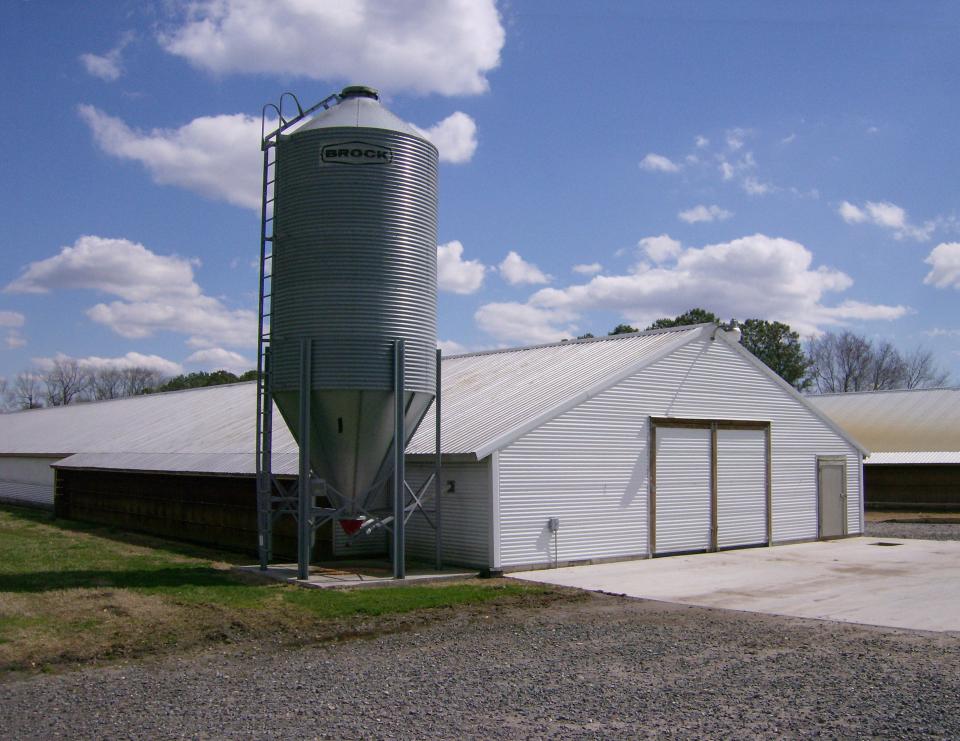Gangs ran bootleg chicken when New York's deadly 'poultry wars' came to Delaware
Barnett Baff, a New York chicken dealer, was at his stall on Nov. 25, 1914, when a man approached him with a message that he was wanted outside.
Baff stepped outside, when two men walked up behind him. In true "Godfather" fashion, one of the men drew a pistol and fired two shots into Baff’s back. One bullet hit the poultyman’s shoulder and the other pierced his heart.
The Baff murder was just one incident in the decades-long chicken wars that spread from New York to Delaware. In the first half of the 20th century, the burgeoning chicken production developed into a complex industry that involved farmers, truckers, butchers, packagers, feed merchants and a host of others.

Each step of the operation provided an opportunity for price fixing, fraud and racketeering. Corruption was particularly rampant in New York City, the largest poultry market in the world, where gangs waged hard-knuckled turf battles to sell chickens.
During Prohibition, some of these gangs ran a network of trucks that transported bootleg liquor; but when alcohol became legal again in 1933, bootleggers concentrated on the extralegal chicken business that had blossomed during the 1920s.
According to Delaware historian Carol E. Hoffecker, “During the 1920s rival gangs continued to use every illegal means including murder to control the marketing and processing of chickens and turkeys in what the newspapers dubbed the ‘poultry war’ to distinguish them from the look-alike ‘bootleg wars’ that were the scourge of the Prohibition era.”
Vigorous law enforcement efforts eventually drove many of the mobsters from the chicken business, but when the United States entered World War II, enormous purchases made by United States Army helped triple poultry prices.
To manage the wartime economy, the Office of Price Administration (OPA) instituted a system of rationing and price controls that fixed the price of poultry, which led to a black market of bootleg chickens.
In April 1943, OPA representatives met with southern Delaware chicken producers at Georgetown High School, and the government officials threatened to seize the bootleg chickens and turn them over to the army.
On July 25, 1943, the Wilmington Sunday Morning Star commented, “Before the seizure plan, of what some of the growers term ‘Legalized hi-jacking’ became effective this week, a number of meetings between OPA representatives and poultry growers were held in an effort to adjust the differences between the ceiling prices and the cost of producing poultry.”
The threat of chicken confiscation or “legalized hi-jacking” did not deter the truckers carrying the bootleg poultry from southern Delaware.
In 1943, when roadblocks were set up to check for bootleg chickens just north of Dover, the news of the checkpoints was broadcast over the radio, and the truckers took to the back roads as they made their way northward toward Dover.

Bystanders, perhaps recalling a similar sight during Prohibition, watched with glee as truck after truck, loaded with chickens, turned off the highway for less-traveled roads until they had made their way around the checkpoints.
The confiscations of some poultry at the roadblocks and the easing of price ceilings for chickens helped to reduce the number of trucks carrying bootleg chickens on Delaware roads, and after World War II, the chicken wars came to an end.
Principal sources
Rock Island Argus, Nov. 25, 1914.
El Paso Herald, Feb. 26-27, 1916.
Hoffecker, Carol E. Honest John Williams, U.S. Senator from Delaware. Newark, DE: University of Delaware Press, 2000, pp. 42-48.
Sunday Morning Star, July 25, 1943.
This article originally appeared on Salisbury Daily Times: New York's deadly chicken wars brought murder and mayhem to Delaware

